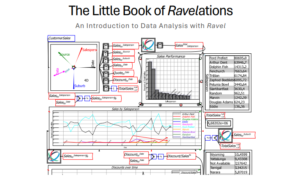Yes, it does get a bit technical, but it’s something anyone can understand when it’s explained with a minimum of technobabble.
Table of Contents
What is macroeconomics?
Macroeconomics is the description of how economies work at the macro (or highest) level.
Major components of any macroeconomic analysis are the currency issuing government, the central bank which sits at the top of the banking system, the treasury who spends on behalf of the government, the banking system which creates money by making loans (yes, seriously), and of course, all of us currency users.
Why should you care?
There is probably nothing more fundamental to the prosperity of society than its rules about money.
What money is, where it comes from, and how it flows through the institutions created for processing money and payments.
But, macroeconomics seems poorly understood
There are a lot of people who do not understand macroeconomics.
Most elected officials don’t. It seems some economists don’t (seriously).
At the macro level, we the people, and most of our elected officials (at every level of government) are discussing the economy in terms that are not accurate, not real.
So we make poor economic policies
As a result of starting with flawed assumptions, our political leaders are implementing economic policies (laws) that are harmful to most people.
This blog is a small bit of an effort to help fix this.
All economies today work pretty much the same
Most economies today have the following attributes:
- A fiat currency, which is not backed by any commodity such as gold or silver.
- A floating exchange rate relative to other currencies.
- A credit expansion banking system in which banks create and destroy money, by making and later retiring, loans. The importance of this can not be overstated.
What this series describes
In this short series of blog posts, we will describe:
- Surpluses and deficits: Every dollar received by anyone was spent by someone else.
- Where do dollars come from?
- Currency users vs the currency issuer (a major idea many people do not understand).
- Monetary policy (the setting of interest rates).
- Fiscal policy (currency issuer spending).
- That credit expansion banking system.
This next statement probably sounds hyperbolic, but it isn’t. Credit expansion banking systems are probably the single most important thing most people do not understand. They don’t know what it is or how it works. Yet it HUGELY important to modern civilization having developed, at all.
We will use US dollars in our examples, as it is the largest economy in the world and the one the most people talk about.
Important idea #1: Surpluses and deficits
Every dollar of income was spent by someone else
Every time one person or organization receives a dollar in income, it can only be because some other person or organization spent a dollar.
It can not be any other way.
In order to have a dollar, you must first have received a dollar
Anyone who has dollars in the form of cash in their pockets, money in their checking account, money in a savings account, money in a certificate of deposit, etc, MUST have previously received that dollar as some form of payment or income.
Surpluses and deficits
In economics, the term “surplus” is the amount by which one pile of money gets larger, and the term “deficit” is the amount by which another pile gets smaller.
If you and I each have $100, and I pay you $10 for something, I incur a deficit of $10 while you incur a surplus of $10.
Every surplus has a corresponding deficit
This is just another way of saying that in order for one person to receive a dollar, another person had to spend it.
The money we hold is a surplus
In aggregate, the holders of US dollars hold trillions of US dollars. In other words, there are aggregate global surpluses of trillions of US dollars.
Every surplus has a corresponding deficit
Since there is an aggregate surplus of trillions of US dollars being held by various people in the world, where are the corresponding trillions of dollars of deficits?
Hold that thought while we move onto important idea #2: US dollars and currency ISSUER vs USERS.



